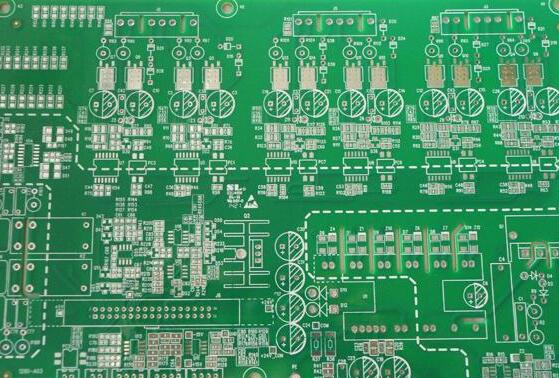Eight common problems and solutions in PCB design
In the process of PCB design and production, engineers not only need to prevent accidents during PCB manufacturing, but also need to avoid design errors.
This article summarizes and analyzes three common PCB problems, hoping to bring some help to everyone's design and production work. There are still many uncommon questions about PCBs that need to be answered urgently on our website. Are you ready to answer them?
Problem 1: PCB board short circuit
This problem is one of the common faults that will directly cause the PCB board to not work. There are many reasons for this problem. Let's analyze one by one.
The biggest cause of PCB short circuit is improper solder pad design. At this time, the round solder pad can be changed to an oval shape to increase the distance between points to prevent short circuits.
Inappropriate design of the direction of the PCB parts will also cause the board to short-circuit and fail to work. For example, if the pin of the SOIC is parallel to the tin wave, it is easy to cause a short-circuit accident. At this time, the direction of the part can be appropriately modified to make it perpendicular to the tin wave.

There is another possibility that will cause short circuit failure of the PCB, that is, the automatic plug-in bent foot. As the IPC stipulates that the length of the pin is less than 2mm and there is concern that the parts will fall when the angle of the bent leg is too large, it is easy to cause a short circuit, and the solder joint must be more than 2mm away from the circuit.
In addition to the three reasons mentioned above, there are also some reasons that can cause short-circuit failures of the PCB board, such as too large a hole in the substrate, too low temperature in the tin furnace, poor solderability of the board, failure of the solder mask, and board Surface pollution, etc., are relatively common causes of failures. Engineers can compare the above causes with the failure conditions to eliminate and inspect them one by one.
Problem 2: Dark and grainy contacts appear on the PCB board
The problem of dark color or small-grained joints on the PCB board is mostly due to the contamination of the solder and the excessive oxides mixed in the molten tin, which form the solder joint structure is too brittle. Be careful not to confuse it with the dark color caused by the use of solder with low tin content.
Another reason for this problem is that the composition of the solder used in the manufacturing process has changed, and the impurity content is too high. It is necessary to add pure tin or replace the solder. The stained glass causes physical changes in the fiber build-up, such as separation between layers. But this situation is not due to poor solder joints. The reason is that the substrate is heated too high, so it is necessary to reduce the preheating and soldering temperature or increase the speed of the substrate.
Problem three: PCB solder joints become golden yellow
Under normal circumstances, the solder on the PCB board is silver gray, but occasionally there are golden solder joints. The main reason for this problem is that the temperature is too high. At this time, you only need to lower the temperature of the tin furnace.
Question 4: The bad board is also affected by the environment
Due to the structure of the PCB itself, it is easy to cause damage to the PCB when it is in an unfavorable environment. Extreme temperature or temperature fluctuations, excessive humidity, high-intensity vibration and other conditions are all factors that cause the board's performance to decrease or even scrap. For example, changes in ambient temperature will cause deformation of the board. Therefore, the solder joints will be destroyed, the board shape will be bent, or the copper traces on the board may be broken.
On the other hand, moisture in the air can cause oxidation, corrosion and rust on the metal surface, such as exposed copper traces, solder joints, pads, and component leads. Accumulation of dirt, dust or debris on the surface of components and circuit boards can also reduce the air flow and cooling of the components, causing PCB overheating and performance degradation. Vibration, falling, hitting or bending the PCB will deform it and cause the crack to appear, while high current or overvoltage will cause the PCB to be broken down or cause rapid aging of components and pathways.
Problem five: PCB open circuit
When the trace is broken, or when the solder is only on the pad and not on the component leads, an open circuit can occur. In this case, there is no adhesion or connection between the component and the PCB. Just like short circuits, these may also occur during the production process or during the welding process and other operations. Vibration or stretching of the circuit board, dropping them or other mechanical deformation factors will destroy the traces or solder joints. Similarly, chemical or moisture can cause solder or metal parts to wear, which can cause component leads to break.
Problem six: loose or misplaced components
During the reflow soldering process, small parts may float on the molten solder and eventually leave the target solder joint. Possible reasons for the displacement or tilt include the vibration or bouncing of the components on the soldered PCB board due to insufficient circuit board support, reflow oven settings, solder paste problems, human error, etc.